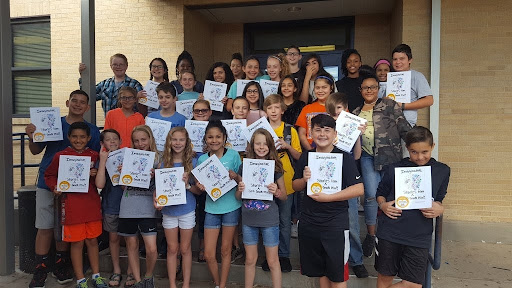

How to Come Up With Creative & Original Project Ideas for Your Class Book
There are few things more energizing than being hit with a flash of inspiration. One moment, you’re wondering what to do. The next, you just know! It’s like being hungry and suddenly stumbling upon a feast—you can’t wait to get started!
But what do you do when inspiration doesn’t strike on its own? Planning something big, like a class project, can be especially frustrating when the right idea simply doesn’t seem to want to manifest itself. You know you want to help your students become published authors—but what are they going to write about? The following tips can help you generate creative book project ideas even in the midst of a serious inspirational drought.
Generating Creative Project Ideas
The planning stage of your book project can be every bit as interesting and engaging as publishing itself if you approached it with an open mind. Rather than specific project ideas, what follows are just a few fun and effective methods you can use to generate your own brainstorming sessions with your with your soon-to-be published authors. These ideas work for any grade level and any topic, book format or subject matter, and can be used again and again each every year!

Mrs. Mathews’ #proudauthors are excited to see that their creativity and hard work paid off!

Brainstorm ideas together out loud.
Planning a big project can be the perfect time to schedule some class discussion and see what sort of wonderful input your students have to offer. Brainstorming together is also a fantastic opportunity for your students to practice their social skills while you help build up their confidence by making sure they feel heard, even in a large group.

Make a “mysterious ideas” box.
Of course, there are drawbacks to big, collaborative discussions, especially with larger classes. Often, not everyone will get a chance to speak, or feel comfortable doing so. Another great way to pool your students’ creativity without losing voices in the crowd is to create (and maybe even decorate) a ballot box and have students submit their ideas privately. Perhaps the biggest benefit of this method is that you can look for patterns—if multiple students unwittingly suggest similar ideas, it’s a good indication that your students find that particular topic especially intriguing.

When in doubt, write it out.
Sometimes you just can’t beat the old pen and paper. Try using the planning stage of your project as a chance to practice using classic solo brainstorming methods. Mind maps can be particularly helpful for moving from more basic ideas to discovering a truly original topic to cover. Or, you can ask your students to try a little freewriting exercise to see how many ideas they can come up with in a given amount of time, then ask them to choose just one to refine and share with you and/or the class.

Read for inspiration.
As many authors will attest, sometimes the best book ideas come from reading other great authors’ books. Read something together in class, or try asking your students if they can think up some ideas on their own, using books they’ve read as a jumping-off point. (Note: this may also be a great time to discuss the idea of plagiarism with your students, as well as how to find inspiration in others’ works while still coming up with your own original ideas.)

Revisit previous lessons and topics.
When it comes to conjuring up a new class project, you don’t have to reinvent the wheel in order to generate a creative and original idea. Past reading or writing assignments can easily be expanded upon or repurposed and given new life in the form of a classbook project. Alternatively, revisiting a topic (regardless of subject) from earlier in the year can be a great way to review content your students may need a bit of a refresher on towards the end of spring.

Check out free online resources.
The internet isn’t called “the information superhighway” for nothing—a wealth of information and inspiration is right at your fingertips the minute you go online. Whether you’re the one doing the research or you decide to ask your computer-savvy students to help out, there are all sorts of resources out there that can help you come up with tons of great ideas for your project. You can even check out what sorts of projects other classrooms around the country have been working on, or browse previously published projects for topic inspiration.
Publishing Your Students’ Book
Finding inspiration for your project—whether you discuss ideas aloud, write them down, or seek them out in writing and on the internet—is often the hardest part of a classbook project. Once you know what you and your students want to write about, putting the rest of the project together is surprisingly simple and straightforward. With the help of a publishing kit or an online bookmaker, organizing your book (and keeping it organized!) is easy, and all of the printing and publishing is taken care of for you by professionals. And when all’s said and done, you and your students will walk away with a beautiful keepsake and a sense of real accomplishment.
Every journey, after all, begins with a single step. In this case, that step is finding the right idea for your book project—not just a good idea, but one that will engage your students’ curiosity and motivate them to write. Only then can your students begin the incredible journey of becoming published authors—a journey they will remember long after they walk out of your classroom for the last time.

Mrs. Bannert’s #proudauthors posing with their beautiful (and creative!) published classbooks!
For more project ideas and other sources of inspiration, be sure to check out our online teacher’s lounge, and sign up for your free publishing kit today!
Our Story
We provide teachers and schools with a FREE hands-on writing activity that motivates students to write and inspires students to learn by turning their stories into professionally bound books.
Learn More





